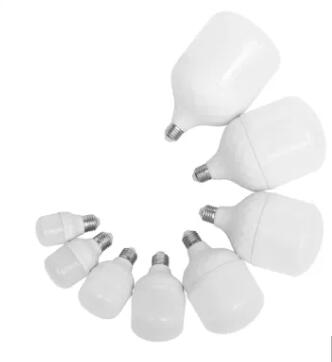Considerations for Retrofitting Traditional Fixtures with LED Bulbs
2024-02-21
Introduction:
As the world shifts towards energy-efficient lighting solutions, retrofitting traditional fixtures with LED bulbs has become a popular choice for homeowners and businesses alike. LED technology offers numerous benefits, including energy savings, longevity, and environmental sustainability. However, before embarking on a retrofitting project, it's essential to consider several factors to ensure a successful transition. In this blog, we'll explore the key considerations when retrofitting traditional fixtures with LED bulbs.
1. Compatibility:
Before retrofitting traditional fixtures with LED bulbs, it's crucial to ensure compatibility between the existing fixture and the LED bulb. Consider factors such as bulb size, shape, base type, and voltage requirements. Some fixtures may require specific LED retrofit kits or adapters to accommodate LED bulbs properly.
2. Light Output and Color Temperature:
LED bulbs come in various light outputs and color temperatures, ranging from warm white to cool white. When retrofitting traditional fixtures, consider the desired ambiance and functionality of the space. Choose LED bulbs with appropriate brightness levels and color temperatures to meet your lighting needs and preferences.
3. Dimming Compatibility:
If your existing fixtures are equipped with dimmer switches, ensure that the LED bulbs you choose are compatible with dimming functionality. Not all LED bulbs are dimmable, and using non-compatible bulbs with dimmer switches can result in flickering, buzzing, or reduced lifespan. Look for LED bulbs labeled as "dimmable" and verify compatibility with your existing dimmer system.
4. Energy Efficiency:
One of the primary advantages of LED technology is its energy efficiency. LED bulbs consume significantly less energy than traditional incandescent or fluorescent bulbs, resulting in lower utility bills and reduced environmental impact. Calculate potential energy savings based on the wattage difference between traditional bulbs and LED bulbs to determine the long-term cost-effectiveness of the retrofitting project.
5. Lifespan and Maintenance:
LED bulbs have a much longer lifespan compared to traditional bulbs, potentially lasting tens of thousands of hours before needing replacement. Consider the reduced maintenance requirements and associated cost savings when retrofitting fixtures with LED bulbs. While LED bulbs may have a higher upfront cost, their extended lifespan often results in lower overall maintenance expenses.
6. Heat Dissipation:
LED bulbs generate less heat than traditional bulbs, but proper heat dissipation is still essential for maintaining optimal performance and longevity. Ensure that the retrofit LED bulbs have adequate ventilation and are installed in fixtures with sufficient airflow to prevent overheating. Avoid enclosing LED bulbs in tightly sealed fixtures that may trap heat and reduce lifespan.
7. Return on Investment (ROI):
Evaluate the return on investment of retrofitting traditional fixtures with LED bulbs by considering factors such as energy savings, maintenance costs, and lifespan. Calculate the payback period based on upfront investment costs and estimated savings over time. In many cases, the long-term benefits of LED retrofitting outweigh the initial investment, resulting in significant cost savings and environmental benefits.
Conclusion:
Retrofitting traditional fixtures with LED bulbs offers numerous advantages, including energy savings, longevity, and improved lighting quality. However, it's essential to consider factors such as compatibility, light output, dimming compatibility, energy efficiency, lifespan, heat dissipation, and return on investment before undertaking a retrofitting project. By carefully evaluating these considerations and selecting the right LED bulbs for your needs, you can enjoy the benefits of energy-efficient lighting while maximizing cost savings and sustainability.



